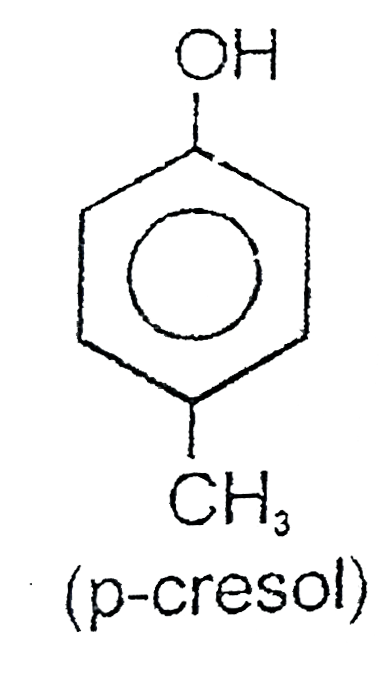In the following sequence of reactions, identify the final product. Cyclopentance Cl2/hv−−−→(I)alc.KOH,Δ−−−−−−−→(II)(i)O3−−−→(III)
pentanal
pentane -2- one
pentan -3-one
pentane -1,3,-dial
The correct Answer is:D
To solve the given problem, we will break down the reactions step by step.
Step 1: Chlorination of Cyclopentane
- Cyclopentane (C5H10) is treated with Cl2 in the presence of light (hv). This leads to a free radical substitution reaction.
- The chlorine radical (Cl·) abstracts a hydrogen atom from cyclopentane, forming chlorocyclopentane (C5H9Cl) and another radical.
Product after Step 1: Chlorocyclopentane (C5H9Cl)
Step 2: Elimination Reaction with Alcoholic KOH
- Chlorocyclopentane is then treated with alcoholic KOH and heated (Δ).
- In this step, KOH acts as a base and facilitates the elimination of HCl through a beta-elimination reaction. The hydrogen is removed from the beta carbon (the carbon adjacent to the one bearing the chlorine).
- This results in the formation of cyclopentene (C5H8).
Product after Step 2: Cyclopentene (C5H8)
Step 3: Ozonolysis of Cyclopentene
- Cyclopentene undergoes ozonolysis (reaction with O3), which cleaves the double bond.
- In reductive ozonolysis, the double bond is broken, and each carbon that was part of the double bond is converted to a carbonyl group (aldehyde or ketone).
- Since cyclopentene is a cyclic compound, the cleavage will yield two aldehyde groups.
Final Product after Step 3: Pentane-1,5-dial (C5H10O2)
Summary of the Steps:
1. Chlorination of Cyclopentane → Chlorocyclopentane (C5H9Cl)
2. Elimination with Alcoholic KOH → Cyclopentene (C5H8)
3. Ozonolysis of Cyclopentene → Pentane-1,5-dial (C5H10O2)
Final Answer:
The final product of the sequence of reactions is Pentane-1,5-dial.
---
- Cyclopentane (C5H10) is treated with Cl2 in the presence of light (hv). This leads to a free radical substitution reaction.
- The chlorine radical (Cl·) abstracts a hydrogen atom from cyclopentane, forming chlorocyclopentane (C5H9Cl) and another radical.
- Chlorocyclopentane is then treated with alcoholic KOH and heated (Δ).
- In this step, KOH acts as a base and facilitates the elimination of HCl through a beta-elimination reaction. The hydrogen is removed from the beta carbon (the carbon adjacent to the one bearing the chlorine).
- This results in the formation of cyclopentene (C5H8).
- Cyclopentene undergoes ozonolysis (reaction with O3), which cleaves the double bond.
- In reductive ozonolysis, the double bond is broken, and each carbon that was part of the double bond is converted to a carbonyl group (aldehyde or ketone).
- Since cyclopentene is a cyclic compound, the cleavage will yield two aldehyde groups.
1. Chlorination of Cyclopentane → Chlorocyclopentane (C5H9Cl)
2. Elimination with Alcoholic KOH → Cyclopentene (C5H8)
3. Ozonolysis of Cyclopentene → Pentane-1,5-dial (C5H10O2)
The final product of the sequence of reactions is Pentane-1,5-dial.
Topper's Solved these Questions
Similar Questions
Knowledge Check
Consider the following sequence of reaction. Identify the final product (Y) CH3CH2CH3Cl2/hv−−−→(X)aq.OH−−−−−−→(Y)
Apropan -1 -olBpropan -2- olCmixture of both propan -1-ol and propan - 2 - olDethanolConsider the following sequence of reaction and identify the final product (Z). CH3COOHCa(OH)2−−−−−→(X)Δ−−→(Y)NH2OH−−−−→(Z)
AEthanol oximeBMethanal oximeCPropanone oximeD2 - nitrosopropaneConsider the following sequence of reaction and identify the final product (Z). CH3−CH=CH2HBr−−→(X)Aq.NaOH−−−−−→(Y)NaOH+l2−−−−−−→(Z)
ACH3CHICH3BCH3CH2CH2ICCHI3DCH3COCH3
Consider the following sequence of reaction and find out product C.
HCNC2H5MgX/H3O+−−−−−−−−−−−→Adil.NaOH−−−−−→B−−→ΔC
View SolutionIdentify the final product (Y)
 ,(i)CHCl3/KOH(aq)−−−−−−−−−−−−−→Δ(x)(ii)Zn−Hg−−−−−−−−→Conc.HCl/Δ(y)
,(i)CHCl3/KOH(aq)−−−−−−−−−−−−−→Δ(x)(ii)Zn−Hg−−−−−−−−→Conc.HCl/Δ(y)
View SolutionThe product (D) in the following sequence of reactions is :
C2H4HBr−−→(A)NaOH(aq.)−−−−−−−→(B)Na−−→(C)CH3I−−→
View SolutionIdentify B in the following scheme :
CH3CH2CH2OHPCl5−−→Aalc.KOH−−−−−→B
View SolutionIdentify (Z) in the following sequence of reactions.
CH3CH2COClHN_3−−→(X)Δ−−→(Y)H2O−−→(Z)
View Solution
